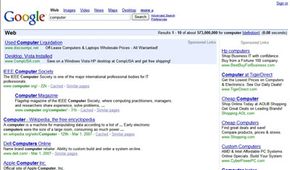Internet marketers are all too familiar with click fraud, which is basically a click on an ad that is not the result of any genuine interest in what that ad is offering. It's estimated that an average of 14% of all clicks are from non-genuine sources [source: Trafficguard].
It's a big deal, seeing as how ninety-nine percent of search engine revenue comes from advertising, and undetected click fraud results in increased ad revenue (at least in the short run).
Advertisement
Click fraud is one of those seemingly incongruous concepts that sometimes arises with new uses of an existing technology. In this case, we're talking about the expansion of Web advertising, where a click means money, into the realm of search-engine technology, where a click means a click. In the case of Google's search-based advertising, the ads we're talking about here are essentially of two types: the ones that show up on the right side of your Google search results, and the ones you see on the search-results page of countless other Web sites that host Google ads. When you click on any of those ads, Google charges the advertiser a pre-set, per-click fee.
So, when is a click not a click? It can be someone sitting at a computer and mindlessly clicking over and over on a single Google ad, or it can be a computer program or virus doing the same thing. Click fraud, at its most basic, is about the intent of the click. Here's where the concept of click fraud gets hazy.
How do you figure out the intent of a click so you know if someone is committing click fraud? And, why would someone do that? The second question is easier to answer: It's either a case of the same anti-social idiocy that drives virus writers, or it's about money. It's usually about money.
Advertisement
